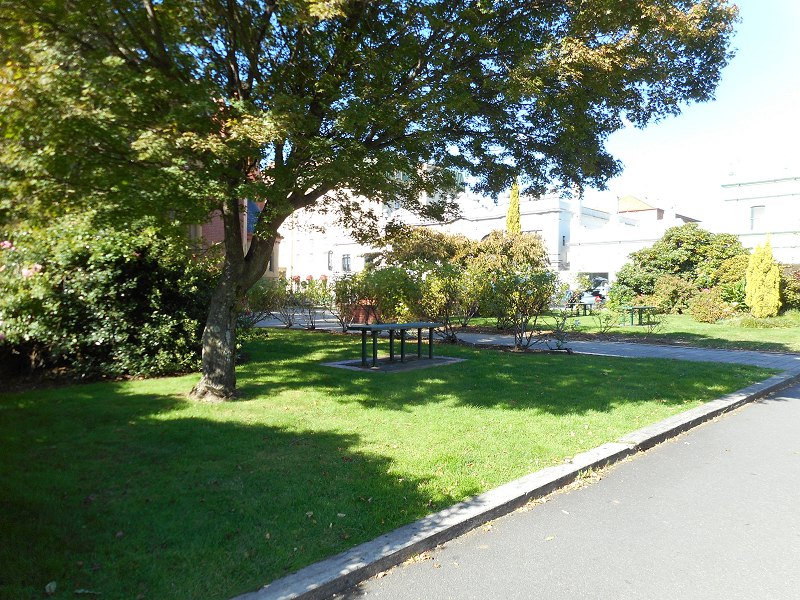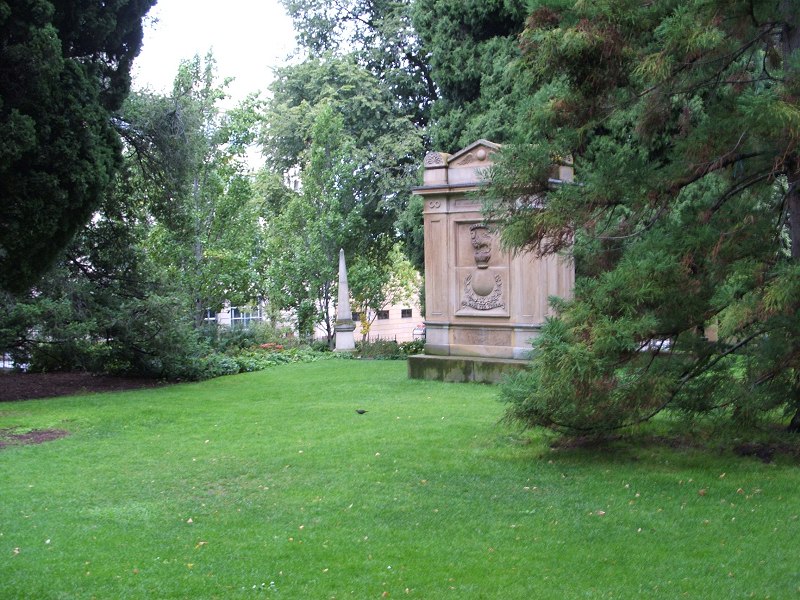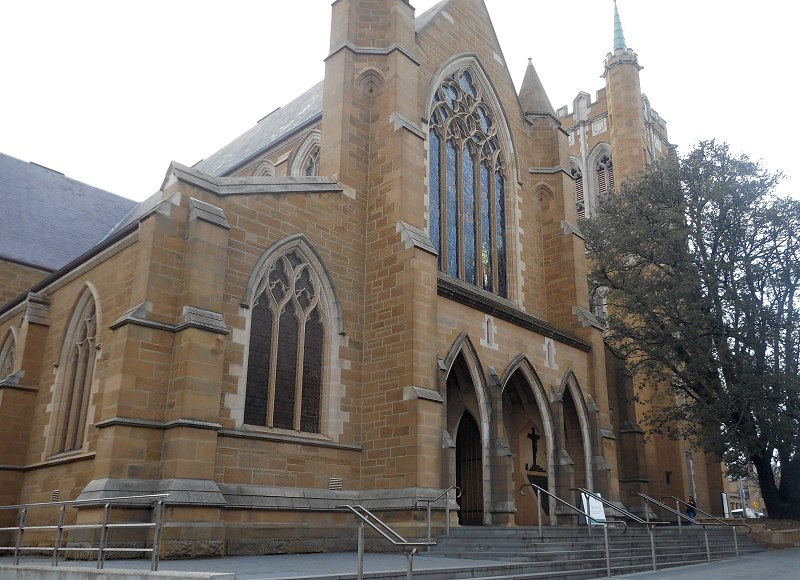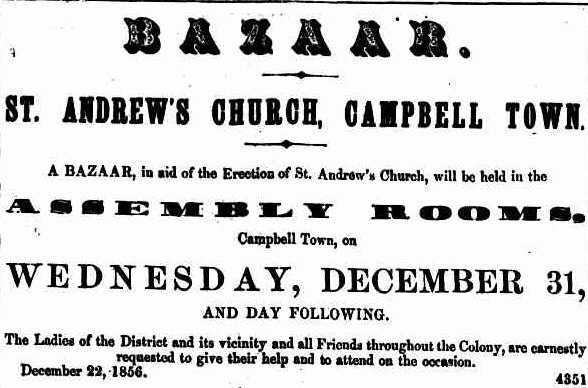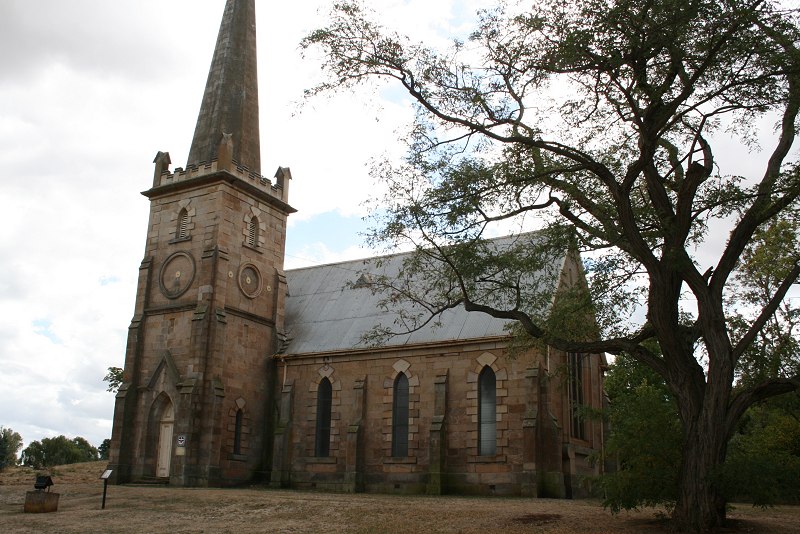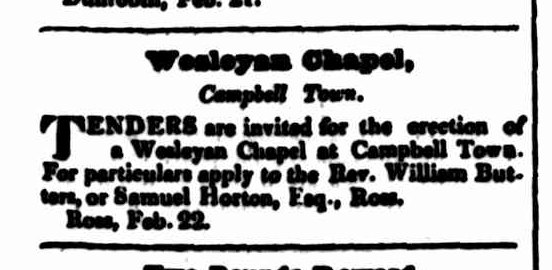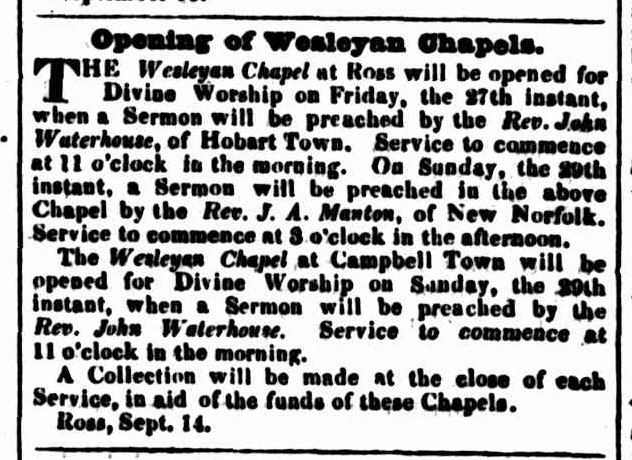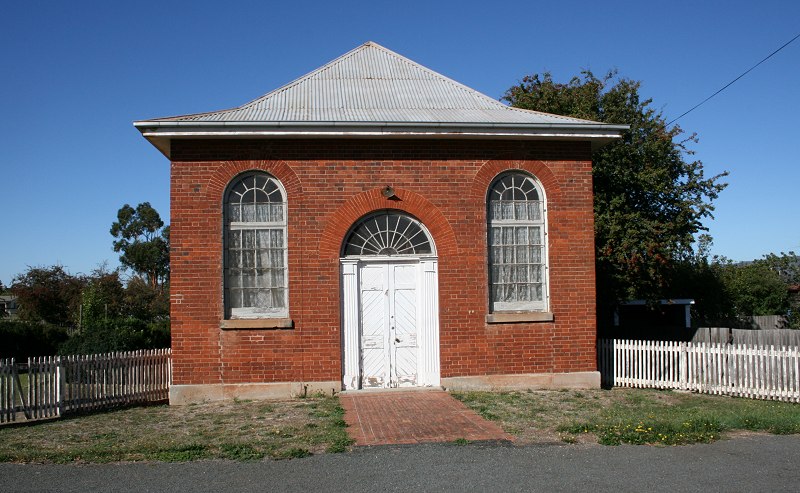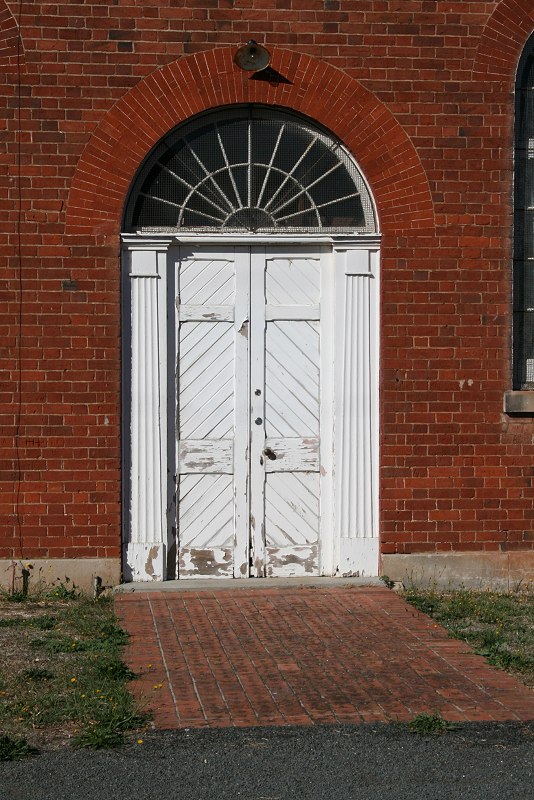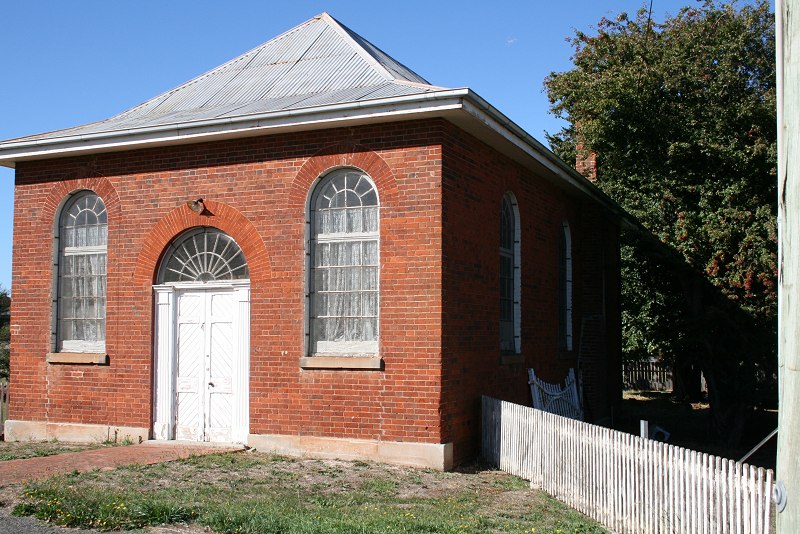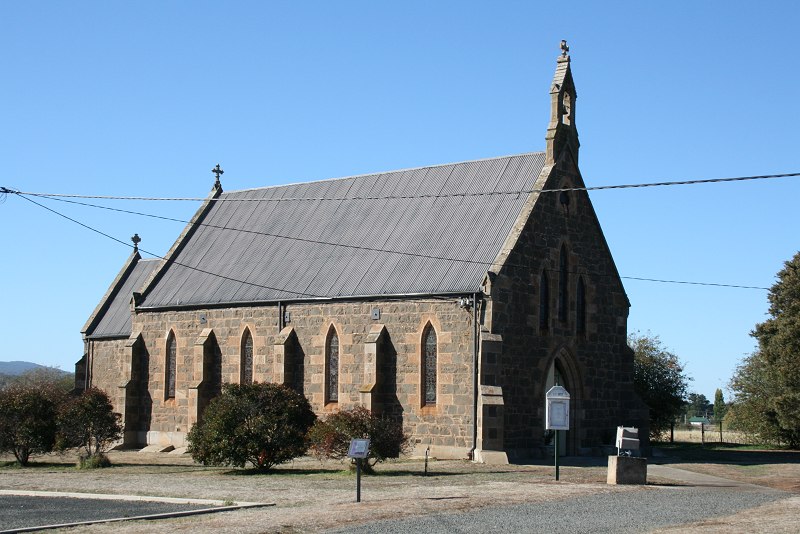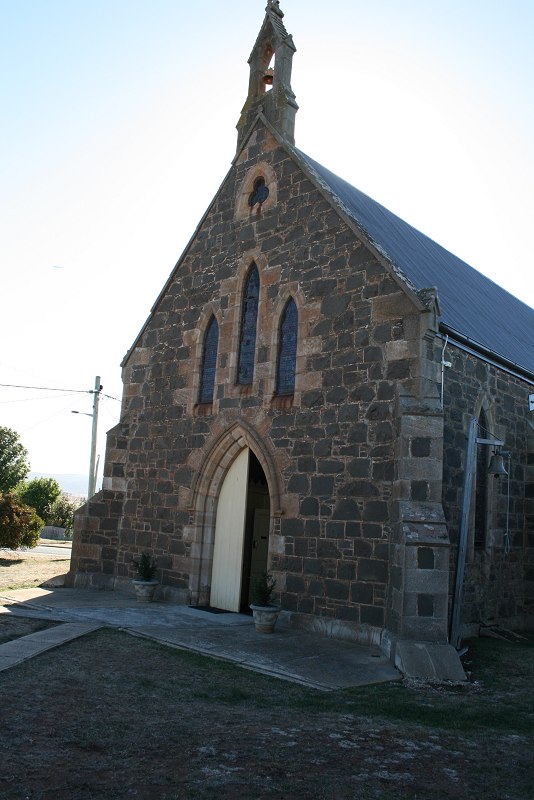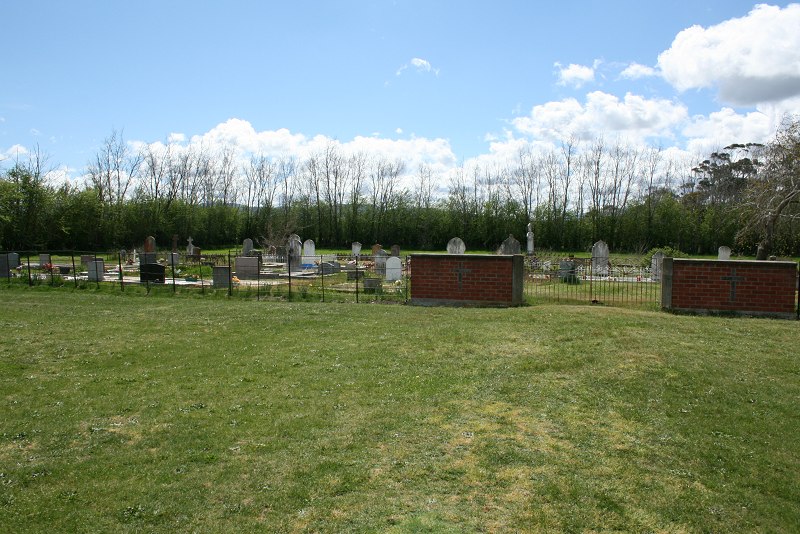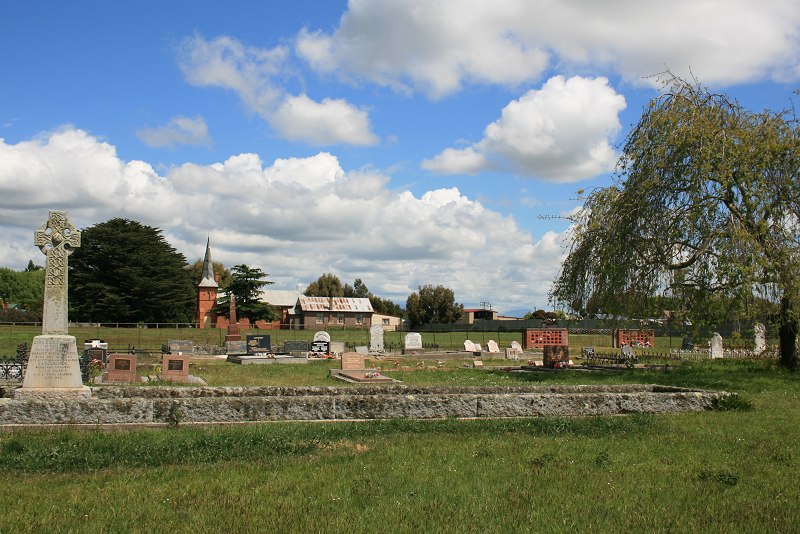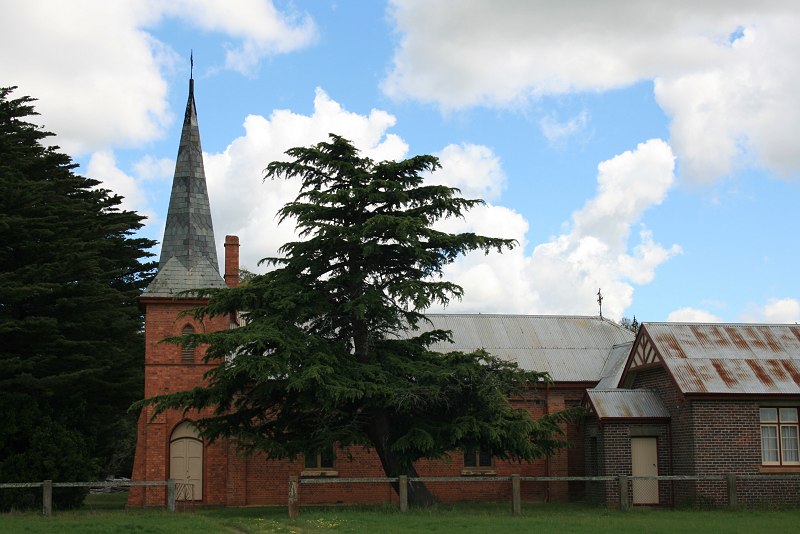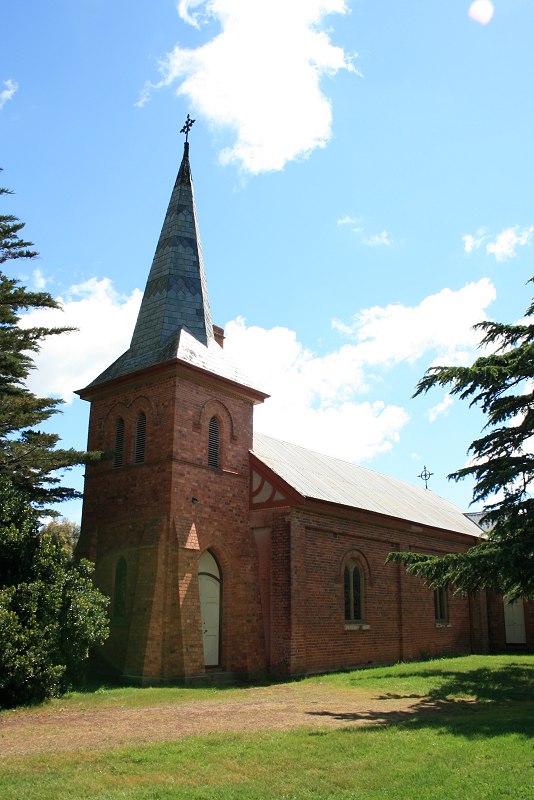Cnr Cameron & George Streets
1844 – 1902. Replaced by Holy Trinity.

The Courier, 6 November 1840
TRINITY CHURCH, LAUNCESTON
THE Foundation Stone of the NEW CHURCH in Launceston, (which it is proposed to dedicate to the Holy Trinity) will be laid on Wednesday, the 22nd September instant, by the Commandant Major St Maur, who has contented to undertake tab office. The Committee, Clergy, and friends of the Church of England, are requested to observe, that it is proposed to assemble at St John’s Church, at 2 o’clock precisely, and proceed from thence to the rite at the corner of George and Cameron-streets. Adequate arrangements will be made for the accommodation of ladies’ and the public, to witness the proceedings. In the Evening, Divine Service will be performed in St. John’s Church, and a Sermon for the occasion will be preached by the Rev. R. R. Davies. Service to commence at half-past six o’clock. After which a collection will be made in aid of the funds for the building.
Launceston Advertiser, 16 September
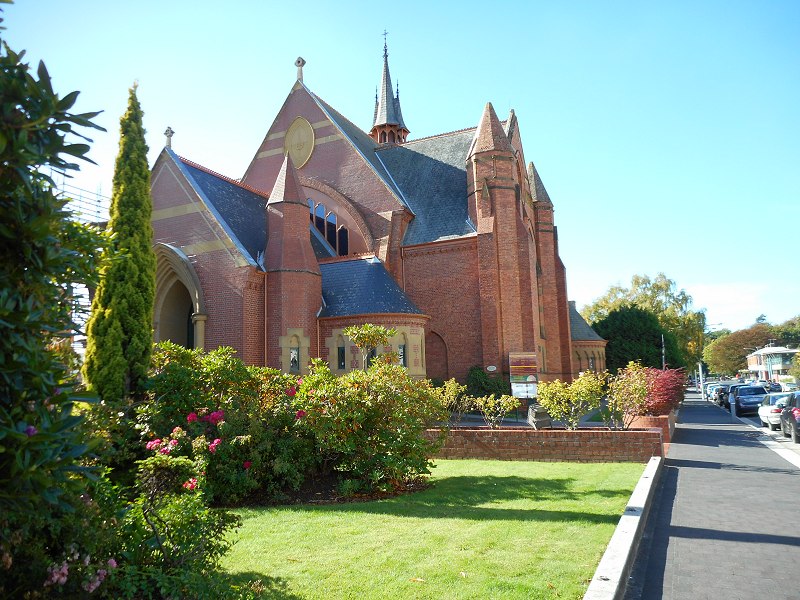
Looking across site of original church to the new one.
NEW CHURCH
We had not space in our last number to record the ceremony of laying the foundation stone of the new church in his town on Wednesday week last. Several hundred of the inhabitants were present to witness it, amongst which we were pleased to see a few sectarians, indeed, we hope, with a liberality of feeling for the success of the interesting object. Several ministers of the Established Church assisted in the service, and our much respected Commandant Major St. Maur laid the stone, under which was the deposited the various s coins of the realm, according to common usage.
[Continued…]
Cornwall Chronicle, 2 October 1841

Launceston Examiner, 7 December 1842

Launceston Examiner, 24 December 1842

“View of the original Holy Trinity Church, Launceston Tasmania” (From QVMAG Collection, QVM:1983:P:2708)
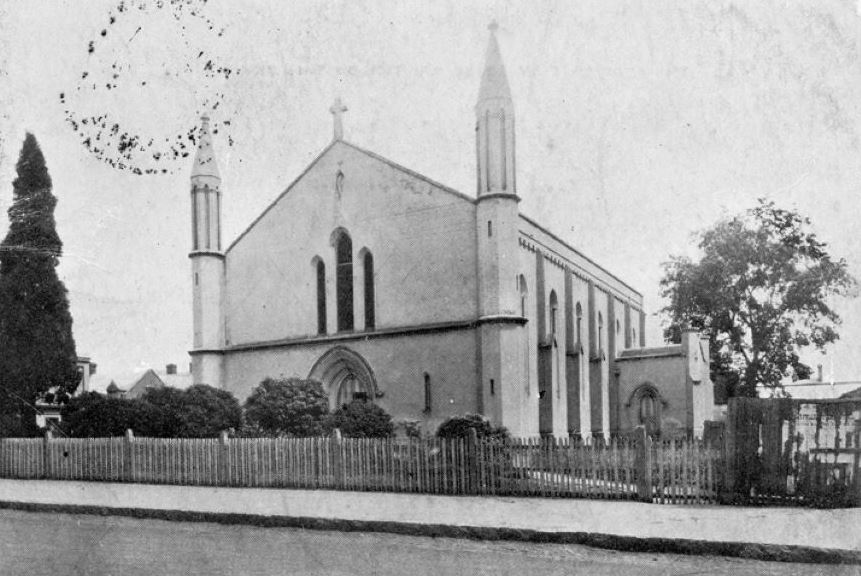
c. 1904 (From QVMAG Collection, QVM:1989.P.0592.)

Interior. (From QVMAG Collection, QVM:1988.P.0607)

“View of the old and new Holy Trinity Church, Launceston,Tasmania c-1904” (From QVMAG Collection, QVM:1986.P.0621.)
